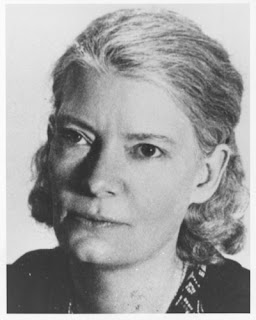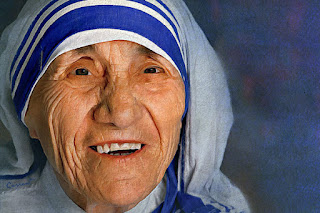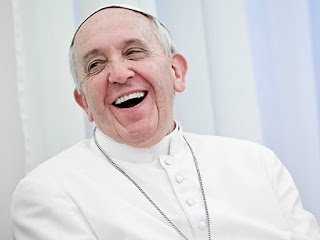Servant Leader #2: Dorothy Day
Dorothy Day
Dorothy Day is a woman who started a movement of change in Catholic social justice teaching and inspired many people with her commitment to serving others. She is an incredible example of many of the characteristics of servant leadership. Her humility and love of others inspired a whole movement for social change. Her dedication to putting others first and her foresight set her apart as an example of a true servant leader.
Dorothy was born in Brooklyn, NY to a middle-class family on November 8, 1897. When she was 16, Dorothy received a scholarship and enrolled at the University of Illinois. It was there that she pursued a degree in journalism and began to develop many ideas about social justice issues. In her early career, she worked for the New York Call, a socialist newspaper. Dorothy began to recognize many of the needs of the poor and began to be an advocate for human rights and anti-violence policies. Dorothy's early career and political activism helped to shape her strong views and helped her to develop her many views on social issues.
Dorothy Day lived at a time when there was great social change happening in America. There was the women's rights movement, the racial equality movement, debate on wars and foreign policy, and upheaval of the economic market. As a reporter, she covered many stories on political activism and the actions of protest. She had many very strong beliefs about current social issues and went to suffragette rallies and even joined in hunger strikes. She was put in jail several times for her political activism but continued to act on her beliefs.
All of her political experiences and her early career left her upset and disillusioned with the world around her. She began to really ponder social justice issues and had a conversion experience with the Catholic Church that continued to shape her belief in social justice issues. On May 1, 1933, Dorothy along with Peter Maurin published the first issue of The Catholic Worker, a newspaper that published articles on the struggles of the poor, workers, and the labor movement. Dorothy's articles inspired others with the great needs of others and people began to send donations and volunteer their time to this cause. Soon after, the first hospitality house was opened in New York to be a place of shelter for the homeless and those in need and to provide food and shelter. Soon other Catholic Worker houses started opening across the country.
Dorothy displayed the selflessness of a servant leader in all that she did. Even in her early career as a journalist, her goal was not to advance her career but to report on the injustices that she saw. She had such a strong desire to serve others first and really focused on the needs of the poor. The Catholic Worker movement embraced voluntary poverty, prayer, and serving others. She tried to live the Corporal Works of Mercy in all she did, even when her beliefs seemed controversial for the time. Her pacifism and believe in nonviolence was at odds with many during the era of WWII. Many disagreed with Dorothy but she held firm in her belief that violence was not the answer to the problems of the world. In all she did, even in her later years, she continued to put the needs of others first and continued to serve in Catholic Worker houses and by publishing The Catholic Worker.
While Dorothy was a servant, she was also a visionary and had foresight. She and Peter Maurin started the Catholic Worker Movement because they saw a great need by those in poverty and in hard conditions. Many of those people had not voice and no one to speak for them. She and Peter started a movement where they saw a great need and started a movement for change. While Dorothy may not have known the affect their vision would have, she did see and respond to a need that was present. Her foresight helped to start the Catholic Worker Movement.
Dorothy Day's legacy continues on today in the many Catholic Worker houses across the United States. Today there are over 120 houses that provide hospitality and shelter in the vision of this movement. The Catholic Worker newspaper is still published and holds true to the vision of Dorothy and Peter and their commitment to social justice issues.
Dorothy Day lived at a time when there was great social change happening in America. There was the women's rights movement, the racial equality movement, debate on wars and foreign policy, and upheaval of the economic market. As a reporter, she covered many stories on political activism and the actions of protest. She had many very strong beliefs about current social issues and went to suffragette rallies and even joined in hunger strikes. She was put in jail several times for her political activism but continued to act on her beliefs.
All of her political experiences and her early career left her upset and disillusioned with the world around her. She began to really ponder social justice issues and had a conversion experience with the Catholic Church that continued to shape her belief in social justice issues. On May 1, 1933, Dorothy along with Peter Maurin published the first issue of The Catholic Worker, a newspaper that published articles on the struggles of the poor, workers, and the labor movement. Dorothy's articles inspired others with the great needs of others and people began to send donations and volunteer their time to this cause. Soon after, the first hospitality house was opened in New York to be a place of shelter for the homeless and those in need and to provide food and shelter. Soon other Catholic Worker houses started opening across the country.
Dorothy displayed the selflessness of a servant leader in all that she did. Even in her early career as a journalist, her goal was not to advance her career but to report on the injustices that she saw. She had such a strong desire to serve others first and really focused on the needs of the poor. The Catholic Worker movement embraced voluntary poverty, prayer, and serving others. She tried to live the Corporal Works of Mercy in all she did, even when her beliefs seemed controversial for the time. Her pacifism and believe in nonviolence was at odds with many during the era of WWII. Many disagreed with Dorothy but she held firm in her belief that violence was not the answer to the problems of the world. In all she did, even in her later years, she continued to put the needs of others first and continued to serve in Catholic Worker houses and by publishing The Catholic Worker.
While Dorothy was a servant, she was also a visionary and had foresight. She and Peter Maurin started the Catholic Worker Movement because they saw a great need by those in poverty and in hard conditions. Many of those people had not voice and no one to speak for them. She and Peter started a movement where they saw a great need and started a movement for change. While Dorothy may not have known the affect their vision would have, she did see and respond to a need that was present. Her foresight helped to start the Catholic Worker Movement.
Dorothy Day's legacy continues on today in the many Catholic Worker houses across the United States. Today there are over 120 houses that provide hospitality and shelter in the vision of this movement. The Catholic Worker newspaper is still published and holds true to the vision of Dorothy and Peter and their commitment to social justice issues.
Resources:
http://www.catholicworker.org/dorothyday/dd-biography.html
http://www.catholicworker.org/dorothyday/life-and-spirituality.html
http://www.catholicworkersd.org/images/dorothy_day/dd_yng.jpg
http://faithit-eszuskq0bptlfh8awbb.stackpathdns.com/wp-content/uploads/2015/09/love.jpeg
http://www.catholicworker.org/dorothyday/life-and-spirituality.html
http://www.catholicworkersd.org/images/dorothy_day/dd_yng.jpg
http://faithit-eszuskq0bptlfh8awbb.stackpathdns.com/wp-content/uploads/2015/09/love.jpeg




Comments
Post a Comment